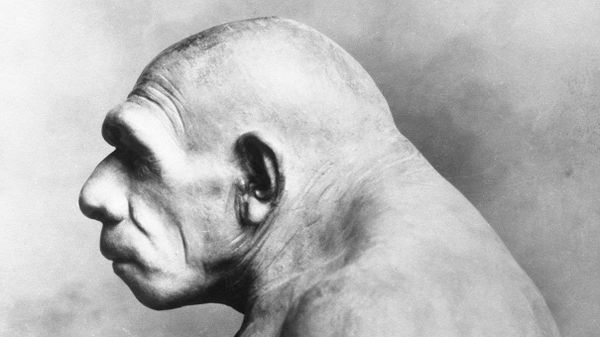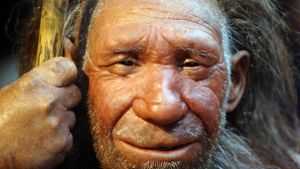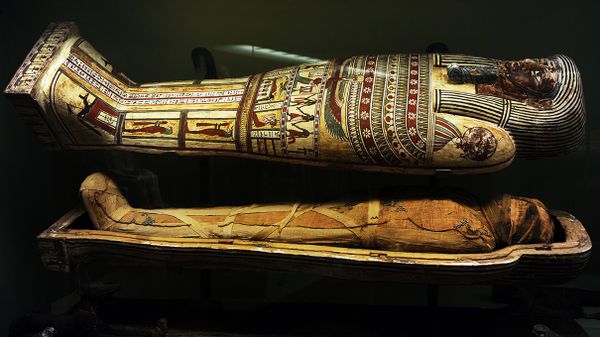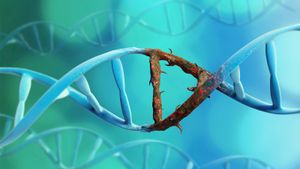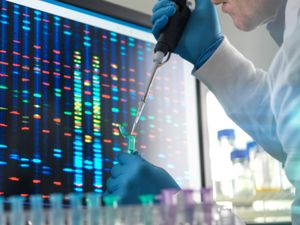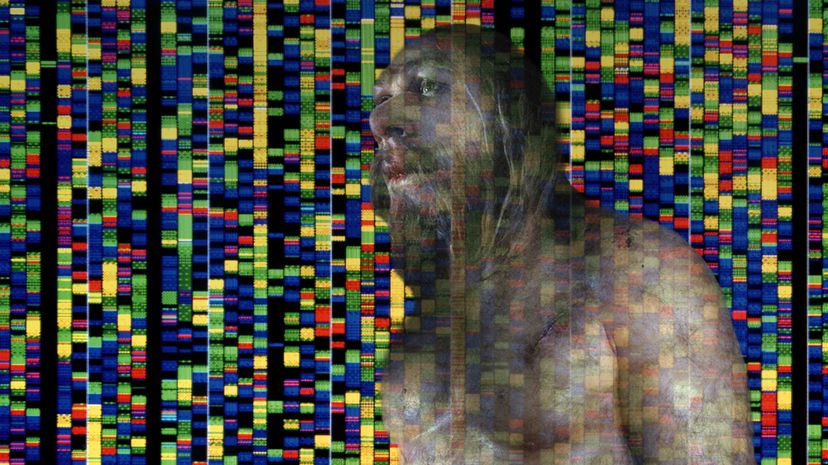
If you're interested in learning more information about your family tree than you can get from relatives or searching through historical documents in courthouses and libraries, one popular way to do it these days is to take a genetic ancestry test. As this ancestry testing primer from the National Institutes of Health explains, companies that provide the service will compare your DNA sample to databases that they've compiled from previous tests, and look for clues that can help to figure out your roots. Such analyses employ tools such as single nucleotide polymorphism testing, which evaluates large numbers of variations across a person's genome. A particular pattern might indicate, for example, that a person's ancestry is X percent African, Y percent European and Z percent Asian. But what about a different species altogether?
But in addition to telling you what part of the world your ancestors came from, a few genetic testing services also will tell you what portion of your genetic blueprint comes from a different hominin species altogether: Homo neanderthalisensis. After migrating from Africa, members of our species Homo sapiens may have first encountered Neanderthals in the Middle East 50,000 to 50,000 years ago, and apparently interbred frequently with them until the Neanderthal species went extinct about 40,000 years ago. Almost all humans who aren't of sub-Saharan African ancestry have some Neanderthal DNA, according to Tony Capra, an assistant biological sciences professor at Vanderbilt University and a member of the Vanderbilt Genetics Institute. Typically, the Neanderthal portion amounts to about 2 percent of a person's genome.
Advertisement
If you're curious about your Neanderthal ancestry, at least two of the popular consumer DNA ancestry testing outfits — 23andMe and Geno 2.0 — offer screening for Neanderthal DNA as part of their service.
A company spokesperson for 23andMe who asked not to be named says via email that the company first began offering testing for Neanderthal DNA back in 2011, and that the data is part of the standard test reports that all customers receive. The analysis includes the review of over 2,000 genetic variants of known Neanderthal origin that are scattered across the genome, and enables a person to see how the amount of their Neanderthal genetic variants compares with 23andMe customers worldwide.
According to 23andMe's website, the report that it provides shows both the number of Neanderthal variants detected, and precisely where along chromosomes that they are found.
Other testing companies contacted by HowStuffWorks say that they either don't see a demand for Neanderthal DNA analysis, or don't think they had the technical expertise to provide accurate data. But 23andMe — which according to its website uses a method developed by a scientist who worked on the "first draft" of the Neanderthal genome — has found the Neanderthal DNA testing to be a popular feature.
"We see a great deal of interest in this report, mostly for the fun value," says the company spokesperson. "We see a lot of customers sharing their Neanderthal report on social media, comparing it to family and friends, husbands comparing with their wives, etc."
It's also possible that some of your personal characteristics are influenced by your Neanderthal ancestry, but how much your archaic roots affect you is a complex question. Vanderbilt researcher Capra was senior author of a 2016 study that found that one specific bit of Neanderthal DNA increased blood coagulation, which made a person more vulnerable to suffering a stroke or a pulmonary embolism, while others affected characteristics such as a person's risk of developing depression.
"There is relatively little variation among most people with Neanderthal DNA in the total fraction they have," says Capra via email. "However, there are substantial differences in where that fraction is located in the genome. Two people with 2 percent Neanderthal ancestry are likely to have it at different spots in their genome. It is the particular bits of Neanderthal DNA that you have that matter more than the exact percentage. This difference among individuals is what helped us figure out functional effects of some Neanderthal DNA — we could compare the traits of individuals who did and did not have Neanderthal DNA at particular locations in their genome."
He adds, "While Neanderthal DNA makes contributions to many traits, for nearly all of them, the contribution is relatively small. These are all complex traits in the sense that hundreds or thousands of different genes contribute to them, and most of these contributors are not Neanderthal in origin. We found that Neanderthal makes a detectable, but modest contribution. To fully map genetic predispositions to these traits/diseases, you'd need to study an individual's entire genome."
Advertisement
